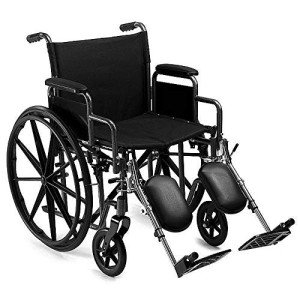Additional Wide Bariatric Wheelchair With 24" Seat
Frame
Wheelchairs are generally manufactured in a standard width of 16" (narrow adult), 18" (standard grownup) or 20" (wide adult). However, some wheelchair users need a seat width wider than these standards. These extra large bariatric wheelchairs are typically fitted by an expert and based on the user's measurements.
In order to get the most comfortable and secure ride for travelers, it is necessary that wheelchairs are appropriately sized. This means that the wheelchair should have the ability to accommodate the user's size while having the ability to maneuver in tight spaces. This is why BriteLift offers tailored lorries to transport wheelchair travelers. This consists of vans that can securely drive and steer big wheelchairs, allowing them to feel safe and comfy in every ride. This is the only way to offer the most effective transport for wheelchair guests.

Seat
Bariatric wheelchairs are bigger than basic wheelchairs and are developed to accommodate people who are much heavier or wider. This additional large bariatric wheelchair from Medline features a 24" seat and a carbon steel frame with rust- and chip-resistant chrome plating. The wheelchair has tool-free push-button adjustable footrests and easy-to-clean vinyl upholstery. It can support as much as 500 pounds.
When selecting the right wheelchair width, it is essential to determine the user sitting typically on a flat surface area throughout their best part of the lap which is typically their hips. It is also recommended that you use a yardstick rather than a determining tape as it tends to offer a more precise measurement. If the user will be wearing a winter coat then an additional 2" must be contributed to the measurement of their seat width.
Weight Capacity
A bariatric wheelchair is usually larger and much heavier than standard wheelchairs. This is why they require more cautious maneuvering. Drivers require to be trained in dealing with these passengers. Furthermore, pop over to these guys require to have adequate space for these chairs along with ramps and wheelchair lifts. In addition, they need to know how to arrange these trips beforehand.
When selecting the chair width, it is very important to measure the user's largest point in the seat, which is typically the hips. Many wheelchair manufacturers likewise use a yardstick that can be utilized to assist with this measurement. When measuring a person's width, it is best to take the measurement straight throughout and not wrap the tape around their hips which can offer a false reading.
Sometimes, the widest part of an individual's thighs may be broader than their hips so this ought to be taken into account when picking the chair width. In these circumstances, it is in some cases necessary to add an additional 2" to the chair width.
In general, the weight capacity of a bariatric wheelchair ought to not be gone beyond under any situations or serious injury might result. When using the chair, constantly make certain that it is on a steady and level surface with front casters pointing forward and wheel locks engaged. In addition, never ever lean or shift the center of mass while being in the chair.
